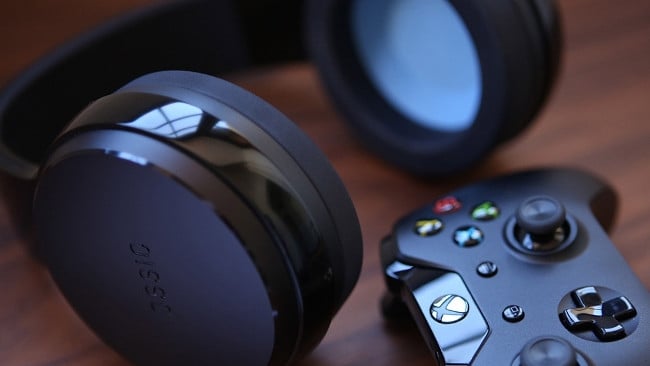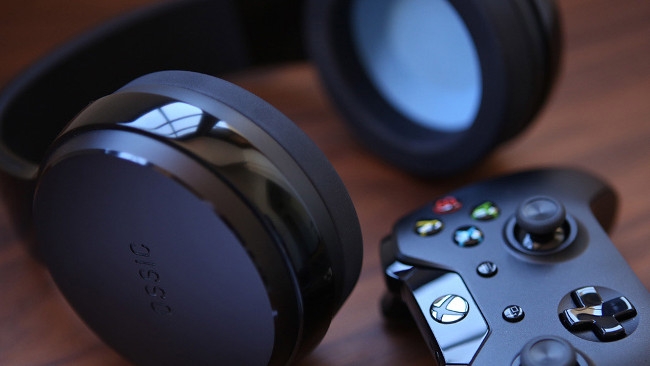
 Ossic 3D Headphones
Ossic 3D Headphones
We preview Ossic's new 3D headphones, another crowdfunding success story, assuming the final product can live up to the claims.
Crowdfunding can be hugely effective with regards to arts projects, where the knowledge that the project is financially sound at the outset is enormously helpful. It's also a great idea for niche or special-interest things which might require a lot of tooling up. Ossic's hugely successful Indiegogo campaign for its 3D audio headphones, which will be of particular interest to early VR adopters and gamers, is one example which addresses the issues of providing 3D sound without a large speaker array.
In time
Somehow, the human brain works out where sounds are based on only two ears. It's tempting to think that that the only way this can work is based on timing: if a sound is closer to the right ear than the left, it'll get to the right ear faster. It's a pretty simple situation if we consider it in two dimensions. Looking down from the top of someone's head, if we draw two circles of a given diameter, one centered on each ear, the circles will intersect at two points, one in front and one behind. Based just on timing information, the sound source could be at either of those points. In three-dimensional reality, the circles become two spheres and this approach would be able to place a sound source anywhere on the circular path where the two spheres intersect.
Our brains certainly do this, but it can't explain everything we can tell about where a sound is. We usually know if something is behind or in front, even though a sound directly ahead reaches both ears simultaneously and so does a sound directly behind. Often, listeners asked to locate a sound will instinctively turn slightly such that it is no longer directly ahead or behind, providing more information to the brain, but even this doesn't produce results better than chance.
In dimension
One helpful trick relies on the fact that our ears are directional. When a sound is to one side, it lacks high frequency information on one side because the head is in the way. The problem is, when the sound is directly ahead or behind (and there is no difference between the two ears), no comparison can be made. The brain works around this by knowing what (for instance) a bunch of dropped keys sounds like. It also knows how the high frequency information in the noise is affected by anatomy depending on where that sound is. This explains why it's harder to work out where a sound is when we don't recognise what it is, because the brain doesn't know how the high and low frequency content of it should behave. In general, though, human beings (and most other animals) can instinctively, and without any training other than life experience, localise sounds in three dimensions.
These ideas have been used before to build devices that produce surround effects without placing loudspeakers around people. The technique is referred to as perceptual-based sound localisation. It is sometimes used in hearing aids to improve the ability of users to locate sounds as natural hearing would. The most effective models have relied on anthropometric (that is, body shape) data that's user-specific, because the human auditory system is sufficiently sensitive that simulations of one person's head don't work nearly as well when applied to another listener.
Ossic's methods
The degree to which Ossic's headphones implement all this is doubtless proprietary. Promotional material states that each ear cup involves at least several sound drivers, so that signals which are intended to sound as if behind the listener can actually come from behind the ear. This might make precision measurement of the user less essential, although Ossic tells us that its headphones perform some analysis of the person wearing them.
The usefulness of the device relies on content designed to work with it. Most current games are capable of producing conventional surround mixes. Although these generally work mainly in the horizontal axis, a 3D simulation naturally has all the information required to produce a three-dimensional soundscape. Whether there are any special technical approaches required to make the headphone work to its best advantage remains to be seen, but films, games and VR cross over both technically and commercially. Ossic is understandably keen to see its device applied to all kinds of content.
Naturally, the promotional effort features delighted reactions to prototypes. The campaign is hampered by the fact that it's impossible to demonstrate the hardware online, in the absence of the hardware. Nonetheless, with funding at $2.8million, over 2700% of the original ask, it's clear that there's an appetite for the device. At $299, Ossic's product is well into the most expensive end of headsets. Even so, assuming the design works as advertised, they'll be only about as expensive as the priciest conventional options and vastly more capable to boot.
Tags: Audio


Comments